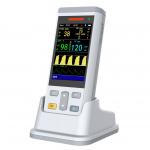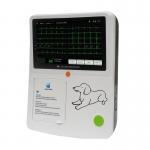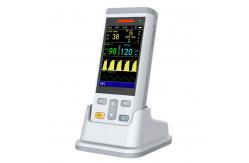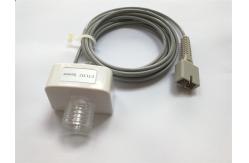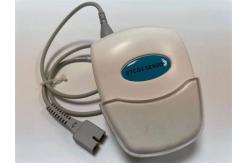Handheld SpO2 & ETCO2 Monitor Accurate Pulse Oximeter With
Capnography
Veterinary Handheld Pulse Oximeter Advantanges: Dual-Function Vital Sign Monitoring: It accurately measures both
blood oxygen saturation (SpO2) and end-tidal carbon dioxide
(ETCO2). This comprehensive monitoring is vital for assessing an
animal's respiratory and cardiovascular health. Designed for Animals: Unlike human-grade devices, this monitor is
specifically calibrated and built for veterinary use, ensuring
accurate readings for a variety of animal patients. Professional Capnography: The integrated Capnography provides
real-time waveforms and precise ETCO2 values. This allows
veterinarians to closely monitor ventilation during anesthesia,
critical care, and emergency situations.
Veterinary Handheld Pulse Oximeter Technical Specifications | Display | 3.5''color TFT | | Indicator | Alarm indicator, Power indicator | | Alarm | Probe off, low power | | Application | Neonatal, pediatric and adult patients | | Resolution | 320*480 | | Trace | 1 plethysmogram waveform | | Modes | Visual and Audio |
Veterinary Handheld Pulse Oximeter Features: - The smallest and exquisite handheld vital sign monitor in
the worldwide.
- Accurate measurement in0.05% Low perfusion Index,the word leading
production in the movement environment
- Provide the parameter of PI( Perfusion Index 0.05%-20%)
- Accurate measurement in all kind of extreme environment measurement
such as neonatal and shock patients
- Multiple vital signs measurement parameters for collocation
optional Spo2,CO2
- two measurements mode: Spot,Monitoring
- Data storage capabilities, support for historical data view and
trend chart back to see
- In monitoring mode, can continuously record 48 hours of measurement
data
- In spot mode,100 users ID, each user can store 200sets data
- Support audio and visual alarm,support to set alarm upper and lower
limit values
- Lithium ion battery power supply
- Optional Charging dock
A Veterinary Handheld Pulse Oximeter is primarily used to measure the oxygen saturation level
(SpO2) in a person's blood and their pulse rate (PR). Here are its main uses, simply put: At Home: People with conditions like asthma, COPD, or heart failure
use it to monitor their oxygen levels and heart rate regularly.
It's also common for athletes to track their recovery or
performance at altitude. In Clinical Settings: Doctors, nurses, and paramedics use them in
hospitals, clinics, and during emergencies to quickly assess a
patient's respiratory and circulatory status. During Exercise: Athletes and fitness enthusiasts might use it to
monitor their SpO2 during intense workouts, especially at higher
altitudes, to optimize training.
|

